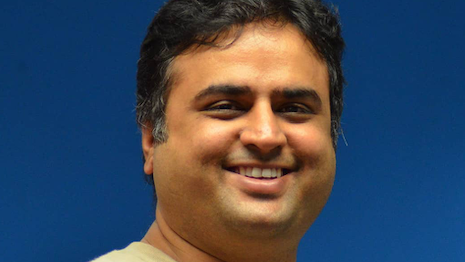By Karthik Bettadapura and Krishnan Thyagarajan
Last year saw a steep and rapid ascension from lockdown to uptown, and we believe this state will persist well into 2022.
The disruption of the initial pandemic lockdown required rapid and serious digital investment for luxury retailers, but over the holiday season just past, they have more than caught up.
Taking advantage of hot demand for certain products, the smartest luxury retailers analyzed pricing, inventory and demand trends to stay ahead of the market, confirming the consumer’s willingness to pay full price.
With thousands of new products in the mix and online prices changing every day, for luxury apparel brands, it is safe to say that we witnessed a Roaring Twenties Redux for luxury ecommerce over the holiday season.
The general outlook for apparel is rosier than it has been for more than a decade.
Luxury apparel has grown steadily every year since 2003, accounting for a whopping 29.5 percent of total U.S. fashion retail sales as of 2020.
Experts had predicted that increased consumption of luxury would continue for the remainder of the 2021 holiday season – fueled by pandemic savings and wage subsidies, which increased many consumers’ disposable income.
According to our data, this consumption upgrade played a role in influencing apparel pricing and assortment strategies.
Pricing power overtakes years of markdowns
During the first half of 2021, luxury giant LVMH earned a record $34 billion—14 percent higher than its total revenue in all of 2019—with its greatest sales growth in fashion and leather goods.
With supply chain-driven scarcity, the clamor for Louis Vuitton products became so high that consumers have agreed to be put on waiting lists.
We tracked Louis Vuitton products through Farfetch.com, and our data shows a significant decline in promotional activity.
For example, before the pandemic, nearly 92 percent of Louis Vuitton accessories were discounted. During Covid in 2020, this number fell to 37 percent, and through 2021, no luxury accessories – zero – have been discounted on Farfetch.
Our data showed that the initial pandemic lockdown particularly affected online premium luxury retailers’ promotional cadence for handbags.
In November 2019, the percentage of handbags that retailers marked up (9 percent) lagged those that were marked down (11 percent). Nine months later, in August 2020, these numbers had crisscrossed, with markups (10 percent) significantly leading markdowns (7 percent).
All of this is obviously great news for luxury retailers, who for years have been struggling to gain back pricing power and reverse the discounting race to the bottom.
The trends we see through our data suggest that similar patterns of competitive response to price changes will happen if there are more lockdowns or other future crises.
Luxury prices and SKUs go up, up and away
Consumption habits seem to be shifting from essentials back to desires.
As consumers started to return to school or the office, more of them invested in timeless fashion pieces such as handbags as status symbols. This trend continued to set competitive demand into the holidays, with average selling prices on luxury retail Web sites in the jewelry category, for example, more than doubling between October 2019 and May 2021 – from $986 to $1,981.
Our data also show a shift to increasing premium price points as well as assortment within the footwear category.
In the pre- and post-pandemic lockdown periods, inventory count changes across several premium retail apparel Web sites have been very significant for luxury shoes priced from $200-$500 and $500-plus.
From October 2019 to October 2020, we saw a lift from 23,195 to 49,870 SKUs in the $200-$500 category, and from 32,122 to 43,401 in the over-$500 category.
The year-over-year story from January 2020 to January 2021 was even more dramatic. Including both price ranges, there was an overall lift from 19,169 to 110,643 SKUs.
 Krishnan Thyagarajan
Krishnan Thyagarajan
Marketing to younger luxury aspirants
The face and age of the luxury consumer is changing, too, requiring changes in target marketing efforts.
Globally, the evidence is incontrovertible that luxury shoppers are getting younger.
By 2025, millennials will account for 50 percent of luxury sales.
Currently, they are driving demand within luxury footwear, as they evolve beyond handbags to embrace designer shoes as status symbols.
Consider our data on online luxury fashion retailers’ total SKU count for handbags versus shoes.
Between fourth-quarter 2019 and May 2021, the overall count for shoes increased 44 percent, from 102,232 to 183,718, while the total count for handbags remained relatively stable, at around 50,000 SKUs.
During the 2021 holiday shopping season, competition to gain millennials’ attention intensified, with online shopping events and promotions starting earlier than ever this year to avoid supply chain strain, including shipping delays and out-of-stocks.
Online luxury fashion platform Farfetch claims that two-thirds of its shoppers are millennials or Gen Zers. Theirs are among many voices saying that luxury shopping is going to remain digital.
Luxury retailers in the driver’s seat?
During the recent holiday season, our advice to luxury retailers was been to increase their understanding of the fast-changing market, so that they could get their orders right, and on time.
The trends we had seen pointed to the need to correctly establish, and reestablish, and keep reestablishing pricing.
Also important were actions such as sending out promotions at the right time and getting the right merchandise in stock to the right locations.
With these tools in place, the sector, broadly speaking, could enjoy a banner finish to the year.
There are big rewards to doing it right, as this comment from Erik Nordstrom, CEO of luxury retailer Nordstrom, shows.
“By leveraging a more data-driven approach along with our evolving partnership models with our vendors, we were able to increase our selection by 12 percent and reduce the rate of items sold out by 35 percent versus 2019, while at the same time maintaining a comparable sell-through, and finishing with a healthy position in owned inventory as we exited our Anniversary Sale event,” Mr. Nordstrom said.
WHAT DOES ALL of this mean for luxury apparel in a time of pandemic change?
Huge swings are prompting fashion retailers to revise their digital strategies and invest in an approach that helps them understand and capitalize on this momentum in luxury fashion.
Apparel retailers need to gain superior agility and speed-to-market, as well as new ways of doing business that reflect changing market needs.
Bottom line, retailers need to be able to price competitively, equip themselves to immediately address price gaps, and quickly make shifts within their assortment decisions to reflect in-demand premium products. There will be a deep payoff for making this a priority.
Karthik Bettadapura is CEO and Krishnan Thyagarajan is president and chief operating officer of DataWeave, a retail analytics firm. Reach them, respectively, at karthik@dataweave.com and krishnan@dataweave.com.
{"ct":"bMR9VFzQ7evFI2rqaHGe5vEWM31dJJqt4zLFCEQs6QIm83h8mV3SkHqwlk93u5I732aEB4RZ8pIScPiiW51vsK8r8xiAiJA7b38cnWi\/s\/k3Pmc0OW1gJ9zCTcT2KVpRZ0qPZ3g6smws+7PN8Rd3lSoOrfU0FagjmkRLwhLtJzv9oLwTCBvbrZ4PlaYYMdyRc9OHdR54h9+zIiLaSxG45a1JciE7S\/49eHsjWqoby1Myhq1FAOal4tKFrtHWODdBD3k8EB0ctjhWk3J50lmPk+IXdPwF\/9ve41FIURtdgK\/brpACqJUv75asuN2oTt2dPyVhaHwrCIMuIBQ6qEdqXzc676NdNCz2X8fIzQGDjXpTVdiwAHCsEEeT3YiHVadAtDLksfBxkY0onBv17kIzPrmSYOVIV2K14IEIL5KEyT6vsKecbohzSWOq8Zzjz8chPGLuW7IxAf80+XhId1NQ3TTF4GhasoFpm4+1Uv27xuO308CHrM\/xZmHBlAA63N2ulKnw5UcI0DsK1eCai4BN0tM1P46JQEfn\/v1KDFAqvLXtMi8silQxNfBbhYpbTJPViBC+cuc04MZe7gXs1Ak17vUD\/ndBED4l3R248cahkQkzeLrJGXlyno7IpKRi7arfnyXOOzs+ph4ABcSkRUwpdfEcJRJKzlhUvqNC9BYnrxFvbdwgf+J\/bL9rjF9Ox\/LM9mpzLwDWNKam5Isw+AF3YI\/VUHi\/G8v6S8X\/GqD6O\/gJjyMRJQbpVkXtRKw2f4qqtWaxq7aHt+4\/2Guq+VRdNgF8\/m4YnA+7Gq6NcBlH3JkZNsKOPL2h8o8qwwedtcUZ2CLwnj+qY7jEmo9uoc0Za4rHC91VmCsbd0bH9pIrE307oMDzzsKCN1rnHCZAfdQIw3zBuZtSon0JeH\/6yeRsN04bXfzdbU5FJdPbJ7HJoXLeEpkKTuvDUgwy2176hu+TGbsHiWfowSxMgvoNIoYOuo0+XLFY3JwgBOSOCGpoxB6IKXo874mRIPCIeUBp71gbIPCLgqtcYXaG0eORRxw5ZX1M1WctKiZaEQ2eeCXgbxHtMkLpZnXFUElbHRHFUYPO+gb\/hRGXjFCur45gO8upbAwGZDUGowqJH54PuoFoFH5kk5L+BlTF0+Pl4reeyRIkolgtVyTpVbmLhJ7kgy0pyujkkLZZc8x8srklmWl4TX+R9XgCehn6sCQLDBPvcnct2iiktKfEtsEoTnKi\/J5LA2SFvVmZcKDKvAJM3G39KvcUISMk\/FfgZMiin93ut3JDMSbcyTP8e9jLkGW2gt5DKudlyUM0qVagQGWZf\/nxy1UqczM0Bau40kwjaMAPkjhI+nqmnInJ5fsgKb1WKbE2DB18cdQ41MVz\/lMpi+wO4kuTBLea6dv4F2Hxwte3E9j5SifGHtMACKCclKvdmMIsA0EOZN41ezl4UnnUSCWPSbYRSFMvmsMlzAk9vN+DsYjvuMwG6QS+mEXO5iiuWbfbThMeBEk0FJje1Ae9bQzhzQmgSLvhv5dBhjxAuG2GNzJbElcxO7cBfodzH9lxhxDgKiN1iebe4eVXn2qFzqaYaNizN7JK9rjO45ZQVerGFdq3q7hUYuseiNRVqE0++3M93ZG3XnKqSO\/+2V7\/RpqWNmP5afpAt\/5ukrKw+9mmzlcTFv7ml4dMcE7zF8W\/nuxCVyjplS2MsybtCsFrcQH90+x0WFcKTBSav+0\/XQvDK3Ju8IUbOMI7Oj5Oan6zxgI3zPcGZxlsDAbWHkZzkCWW6XsaeFFNKodjuN++kyzD3d4POZc\/funzcF2Pu6oUFaRgvhLTs\/DyICIieHe0Bb9FKN7A2HCYeZh1jBztGnBA0wBijDFhqKGqkZkdnALZBVYkomb+nGImHLSIgYiaMbTmK\/1sqXOqke7n5\/kVqeILGKsbSlbkVXYgFqqVZ7JEbK2Tqro4yhis9+TcTZVfMFLHOXZOnI414DUuXOlztLud4fw5miM\/LeVVFz5sOFkC3BcZs23vuBUC2HfD4VtJAjpSw57hTFoieFqG2eQ4Mw+TdnRN7wIgh\/\/JAjwPQodp8+CQpqfWhUD\/9rmb7cxO0hcxvHQ+IHM0IbQAJluRqJQG+ZxyQibiBoZ7M\/xRNMjnSg1IrG8p2x2fF5EgvUjQbJdF0mzN3BTuTKd0Z37Dw2CmUNeTR2l+1RTVI82QOOnMqcXdEdm5xZMsJycJoiAMUXY9ZEJz0jjFpEyUSteXsMueF7hHP06gotHA5hm\/CqdmrYs2H53YCSqEX4HcFHG0hGlsqSRYeILbbTE63XzJp7s2HtSaB5VP4bYzZwowPlabghJ\/uZmnH3X2X+N6ws88yf5wWvKZYivNt5HnjV8ociTo59c22lXIQ4pbE8btTD9StQtPRKB2w7esr+cYqa6ivv7Y2I\/Fvv5X68Hb9jeghFD1p98TDKwLkT4rEnZ4fzkYvD8A54tEPtv1VNwyGJs\/0d8OwKV2bSDgq+iRTxNpPxw2XhPoymjIZyTOOAEkf++78thyYvK4JFvUtYnBNoLJz0+HrkPsN2AIY7IDbLa8CDQJ7hGUxSIi6zJckmxoLP0vyjVgi8q1\/xfgwGhBc1QIK249ow4YV0+F1awqisaK3oFHPGxZExQYNCD5\/gWPnlxsoKiKHLUR\/nks2m+UBb9lAItfJU2DABX9iGjFWbgddFrDq375\/7IbiINXSyXbrW1S1apEAHAT6rmf1Mo7+c+rUu6oVF\/7qQhQBS3loDyeEmCtTmt2zwBKDvADE\/Yy4FyEX0wy1IP86BQN8AZUxKosBOVo5RjP\/Z+HYRJ9aL881JNDJDcNyuSbUdonpmaL0hkTnK5nyWxloeybuYi4d2\/8g9IS+lrW+dvYsMMsP53ktJ9ceubxz04He8sFXHZxpaT8k6SwCe\/s0WR\/5l8uglr+3Cgr7yFUztpkJNP7qfIglZcRX2qay5+vUPNAINDveWJoxj2EiHhy3fWBa7pWxZ4pd8wEpFmAhOQ3SMulS5mHGhovE29vVcYsLFLjyEmHr5WVG84yV1dm2elhDtbaSKRgmi44UBgxr8RvGnqQNkv+RT1PcnhQzllQl1M49ItFKt5vsejmc5ppRvZCny3z8OFg\/4ztj7HkPU3hhFmzbib8WJhqnDy+D3W90HnTjn2KJSJstxQwFOmFvstqTHTeCHn7cNsAlvuaTWY0R+vp3O2pjA0L8J7V3rOeHmbYfsgEuV+vP2x9UPqnteFWq4Rmz06WOjSdh4Z5tlrT6sgjLjVS4\/IeS8pAkgyisB3b0F8jE\/7T7aGbNwcqdctPVlbRgkF5XF3kaXEdj7KKcVJPJTTjpPaQ2wnjYBQwfTd5VInDlaXFQtlPMZQZbXk\/Gmjvo4\/yIeY7IXcWkKrVYK6a\/7SbAHXRiaZKt8\/oRoNhCjSMX4405LLfYPLNHCF8tk4AXhnohu9Z70qzcML0OUQ6fqLY\/r\/P\/TQsWncDnWpqdKp0Vfb8k+4LGLd1nql2lek3cjaQDMz0F0nYgLfT0ZrUCZwTh6Ut0Y+bnqqxtYr\/rBe4rGCUrYkPQnn\/wdg4MYzXtIpJDxpEr7XncoOzGxMyEaRubOVWj2aqrJPSfPHCtGiNknucvNJ7YWO7OYIbOEtlTtO88JBYBwJFpW\/m9\/xP9uRtR3tPaM5ox7j3oQUYUk6KRBKRSK28QqU5CBouFGmWhLjilyoReZa7j9G3w03lX+34Tn0CfY1W8AHVWoEc0hGaF+M092N\/mirgeADE04N+NB40fKzAFslhqaFLhLTXiB05iQ5OxNYhBNYzGKEeVezf5u\/pc4EcF0fDogL+0QHPowHM1EWnSt+EBRbxLiAOIDKyRf+aI2e2fFDlJo3kD95bm2OCdCVzuYPxWvQg38xFsSgtqcddqPkLPsogoXOOptxWhwgmus7\/uFZygNWhu2YXmahavA8I75ImrUR3wt\/ulHfPmPF7LsCKvL+rZ3REHwgnAC48xJOpHjenRAZNygJyI8iGPoSyJh5YmIcX4GGS0JCREKJqVRAV2d4DrmNVgCGIVSt+uDFSGI1iWRaOEjXVcpq3NQAte9HYoe0mcnDu0NsFDOVSx3nKuRXLzaX3fbfkXmxtGako2WDpfqeKrGTTu3wP6rdq3EOXR\/jwTdYsHEbuLhE\/Ab652zHkyxdhRlL6Vc9OgjiL4PwwcgNuRPjWaIPHApnC98aMh6G5xSs+CYPzu9D+Pvs0Q0s4pS+ugId5KADPqV5CD9WsHnPkOIuxl1nxgbNNx+6GEXTxxM+JEaXRrywgsDmfKNc1ake9LVNDlIPW4ZH\/mo3vqTiM7tZ9RmoX7BiICd\/u7um8mlG+RhnzKS15pogfoOf8ESekIOw8pWadNLjX3Uc6rAjK8vU4qeb2A\/aarFzBXOBeZXyXoAlg10nS3N5vKGeuBh8IsA1krw35yhLIyyyw0ADRBhBYodkx5+w+lL5rDzr53xQanyAPWcJSpO8Subct41uWd9rgB2donys9wh8bJ2JCGPWzSh\/pHYT+zooWOurVl7HFVXXVVivEjrX\/64Xy8JEN03Bwo8O9dmEaZODCIBa75UxtG0SXhlCeJkjfhXnWsHblKsaERWMnzwum53dmN1bOBUQnJKpEkFiozXUJ4wGz7fD7ZezWYaX10pq7xD2rfiQsXI7\/yGtaeoseLJ13lhPGQ2pL3P6vmP+fhhnTj4\/Y\/zmxB2efGPkjYeOhSWCJWrkFDs+GKKwO0yBZjIuixaCAAfZJUwGbH71GeV07DR9jxrHYnNwk\/cBWiigM1DBngJeie9t1TCEEj6xC2Ec0opd2gcbuFG7UKjq1+IQZkz1QswvpVP8s9\/5TTgc0buk\/6w+8bDRJzuXekjxdPsV+ximFDV4V3XNU9\/HZs5Vu18wXtpO0kZxKqHom43Mu3+WJFD1azaabQBpV0npJqkOeHK\/79S4cIu08UgsP1Na1g0KQJRG1\/opdrLg2s7PrMaomFhTogcPxPBXgpES2kMFEOW4ZxBFDP2vaf8nOTmdltVbObUwpDRTCHUJAR6egSF+QJNuxOBW5QHZr6d3F5co6E+WLZ6\/c1bB+CounV29lewdC34HrVSJcHCmqcDlSLMH9+43kHy3n7aVwUuWza5QGL760pTr\/Nobwr5CA0G5PZltlf\/uy6dT4kMOZO4KKMJJ2LnNo1JbDGfMaeMEZ8qcfr8vV2TeDnIWMOy21lJHhuVk7WCC0PGwijB2uSGVlhE4MXs9i\/mLA8MQMDFXhRVPgqT7yZ+xw\/mfIDxN0uUtJsEY70Ig\/5xPYBbb+dvDLVHv2jJuOWg2ETvuTJYRBOJb1gA6DP9iuw3ohhk5pQ13zSs9rleuB+tPBwMzCFrCeMzOv4UNKW4CgkD+iJvOimTgoY3P8E65mJm93x6Y8tlveTKowNaep8NHRXkjbggi85Ebofs2t\/udbCgEBFGC9NScQ5a97BdfArL8tiF6KkbJp\/1j2Q1kOUIoQhGLYGEfqGsqQLEzLi+aWNMOJrQBxCwtt0b5DZ7u06Q4iAcIK8OcyzeyJzfIPluBnIldSMB5jFZf2FYTgW8RiY3qIVaa5Zg63OltTxQpX8ObUjUeoe8hSE0y95\/wxpm7HF\/nfVp0Birv0Ys\/6KIqfSrUXHJ5jsMd\/qs7QXgadwEUdOeFHGtIbi8+q6pGXbU6fLcklknE5SsNMGdna3Cawof3bcjnDltOWPBcE8qqKoGISgsm\/Ap+DFcTBVl6NWcoEFhzC7NiJL\/KAR6w4bYKlEw+S6bJBs3Lu1XJ2ty1Zdi34YaIOzNlsq5cbiGyV88TE7\/tcRA7QEMN4HSgsOvfFfo6eHN\/3rrevZAGsOO2SmSAB8AWE0vP\/GB7WdrclPBXF7XL\/6vj1rCyHZsz7z7ZlGziUjnXlyjgUoF0PQ04KOTNgXQW7t55522Z5ubfFxoLzz8PRdJAa1Lv9gHzBBJkBTDcFtVtfXXfQCsBrk0C67vK0NU7aGmvZcy4EVM+BiRUpimMRfjSNkIdNAAKA10rq2Vyp0Rd8gc9mFpU4rGe6dHWwffvZM5gdMI0TYG2I3nQ5Y5O8LyS6eanPrOg64vUxtuMICwDRcSfa\/7\/7qhWXDipLyS5P0nGWBAbz8isLdyzOuKHqltHSmc7z55okgL\/RRHbwfEop9n6fpf97ptU2oyaXzl9kLN5jckS\/oC9VSG0Ax1JxZkCfFMewg\/9ymkUuzsL275IdT46ZVjpaO0eRA6fFpR2YPFrhwWaIGZS4gaYcFDg6V+mu8XBymhwI7sIf69BGFAyqau+Wgm22hVG0gBQbecDoz5obJes0zra7SeZaa6bOn5YOLyDGvRtFzunWs5WnAqroDwsD0kJDpc08kmvwsYUZDliIpP+zOvxmiiVbAkFfw4qNTyZunNx83pSBt7Dgj9yQZVrweQ\/MQ9F7NTlwxcgo4595sSCevYDJ78r18iYJRWEJEk57pAxpMIRoSmgd2ShDdt65wANX\/8EOf4zasdH4K\/8auhrDtCwAqHh6mP7aNyjC+XUKKIJH9xv0ngUGnNnTGMHxOSlOTWuj8G48C9tWiIACSBLRIYn9JhY6Py0PfkPm7O\/d9DvFVbDYx1ITb11PpKmeUidQBvr7\/JOXpFuCTqDo\/Bv4isSh0hPhTR+ymewNMx7PMbj7kKxOPVEdQ584m32ycwznAbOjZjT1kejmOXf2uzr8RXUgRj84Jp0SoNXBhJfmS4iXFfRux7xCDzSckMlGB5OFbFp3+02g6kWutnwqXuN\/pzAceyhPKUAx1mXIpvFD6mo3jeRL\/8U9txJK7kk6VAwPqgiZ5kSXLN22cke4QluxVKOy2XIp5inLancES9A9xr4ipTUwr0JxN0C1UcsDIZ0hjAmEJYb754AsRx6UYj5N7jRa+Ns\/twPOtvDKH4iPjAtGxdoZmoBWA1j5+L3r9qRV0SjU0Ta7JVFOujLwKZnsExYWCvSIDz8FLwEq7QBEFozMjOVK6NsUOOD4Fovdw2b64Z\/Ptse4683sr5JwqYoxy1oSm1eraJ3ie1TUVd159x8Xh84EktDyq1mH9zN\/TfcyastrcLqZQpidxQrtpL2ZqXiHho0LQhtkm5pxjqGAESGld0H2yTvOBx9NljiqN1uuYibMSn5L33ZhqmXNGQRfizFT8KgePnWFSD6u8mGB5AuJXAYEc7vTnFmUNwqAicHhz3xwq66nparafkaDluGomVw3Vokbd8o0I\/TKNtvliIwhUAv\/Rv1oMuAX31ysa+17U\/iMBmjA+NzcNNZ+fvlsVR6nlrBsxLHZQQ1DbXRUBjAnkJ+eA82bkA+SPGr+WmdaKCrjM+0cNc\/HPUKDccvPG9QLGlea5T5QlmmPajdq\/wWyaebRIeMsXYUU2844dYFP6gdbWRsh+UXzvngd\/WGKjhGF+h13FL2ow\/vOZ+Ml\/0x1vza8dm1dLruBD\/AoUcWdm4XiJ1Baw3ZQqv9yiYO9CY5gMHnZRNEV2KYGWILLzk+QHTU6KrKI0xymIXbSuysYTbCi5LC2SBL5tcgFXH1U1Y37k6BQMG2x0wmrtNXkMMEfANo7hgTPWeiuT6cHFP83XfCYG5z5NEzqwWJfhO8twXrnfROaGaHtOlg5JsJv6cuHlNONGPreyM3z6nPZ4dOM4LBh9abY13\/x6TRC\/jkVCUCUj1DJcxkaMQZl5Sxq1J5tfSVOpNsDozLnuoynpsYwiCrxhwP+3pVgQjhB+tgCyAPEElwZBGfK9VKdTUNRi4TTTDbS5xQcxHvaJ1G6EGEAznc9ojU5LgRNvhs4yw2UB7hBWa59LC+ctJrz7tVrSwUUO5geuU9\/YWYxwCOj17LbMHjRqms4fc5SflLPGnv5tn6yS9++n4nSd2R6iHCaBVzZURhMRRnTGGa322uBUtDCxhEAeiHrE6Mjr0TN\/Lvu\/dd1MHQY6aY8zy5F53l5gsDWik\/0+wrmp05bA7T9pOMDv2FhPnuBBO80OSBsPfOdaUKbhcbvMARbUkkbVoqbLqDzjWvC7\/7uDvVU+NKUxRw5VXeDAJqdKZ4JuaSXuqVoyK6xqrw5m9\/v\/nUtoYhihdzD4NTKnhx46G7Ygr1HYukA3NWA8TBu2RwhuZ2vyVmZjuKelNJj8jz\/k8bKcspVvuxUaudxinnyNw6DQGUCxvlcqn054AWC3gARFZxFkwc7025arCeIKmMXhD5rOdjHU3ilK20yA6Cv1QdVg3o\/QC0uixV\/Psqafi+rcTLm1OtJEh5X5CvxXvlBoqIJoN69njaKynlCjnCEc42Mkuf9eL7+Pd3a3ZKpH1PHCHCKiINu8UgwPATgjuNAoRVdNHTZThH7\/PjxyZRJTF8BsBEUyWY5+xtW5KKgQwqinlsc4ecIaNZVZKfh\/EKwdppSea1qWtD3+oML4SS4tFY2TWJUu9UzworTgpkBeOjVwc1PUQeswYucYpIIsITH1wwVYJQ+ygno\/bsv2vwuE6MbdZz42rh8d\/FV7LyF5AWumMCIWfOhTmUtimdBCFSX2tJKmanA41L5nWbzBCvnxyQHNP\/LtdVhZN5R7UG4uRWc2VZolUgzpGSf8\/EjOqNwn+YFkuJ\/3y672ULmq8baviz1O8A888gdPxczMYFUeXF7TsTxCmBjyLgauPlJ5rQE\/OiZFJlBhJhI6PqjB3yfWMUODlhFOyvIvxhZg26fce9ncUIJMu98y8JxV5EJxPg2XMVkDi2N\/5N\/zj99BEN0wPtTfnSpdAdD6oxgNnha9E7PfGCwIuhUi5ZKt3fi6R2bk6uQcB9B0jOMSWI4ahJNEit+UbgmrBaDOGZAzmfrOSGHXH40gDXrt+HVTSGwI2oe9pnr\/mwU+wW7g+SzLhl8QpXVoL4a1AEu49q\/OvfQHAfZevYCnB9qEueswMKKMKgXztXiHZYGJK6I3pFcQ9BpBCHuyXmquSX3fgulR8v+eG4Nce54+1oxkKiNjppLe58hywugPK8\/u8rLu0h5EPTg9E9djUtB8hGvnfR924CtwOXXGE9\/0Vs8VP2KhNTLZ7TmJlRhUB2X+1FHjnPQJDMH5Jm6cISI6k7Is1ID4uGzxmMyn6bcxlGwpkQ6mkCGhWh\/xw3k0x5BaPjMWZRs+7\/XkFLcZy3RB7VNpZ8H5b112E+0ToXab8vfxRdtH0QKbfwgq0ui0Nw4F3eUC1CraJqWtMM0H72K+0JHE5qhQDLUC3fSCNWM0oBdUPEUq2Ee19btsp3qiIcJCFxGgoONJX+kEf8hs6boKCIJeUpMeCsW67hvHoMi2HmeFoRMDHaAjyp7JY6Le0AEIRUZoESIS4AFXq7JSey6f3bWpuLYpQD0c8z8l2f1QDFVcNulK21g1hnWL\/eJKx+n2B9G27H9gkqZZ2uAk0bo3+TbVc0AVnk7vIQHlU0qByJPBDGWbWMuJunKAJlEPh0pTmbAo28Ck+1CUxmkw0yZBhQAkcjgVdAW9NqH1ktaqtM8z8Wv7yhU226gYJjZ2Rsj5qNIhyMCOMkG2MG\/azaI4lDj9PInhQuzbeOCemHJ+s5c23RC8DCYkXEPMYZWZ2aRWSLFWJ52GSvTef+NYeWEnpA\/WZG1Cgbn4sB9eUIfXR9Y6eh1XsGFqI1diyDiHTRQQvLVV+q+xZrE8WI4aa0slWZ9atUx90GyRzKDtAfNyYB1ZlfdX5\/zQm7qNHMjbKq3nBsbEE1ktv6ntwxfzowu2fer+oYj5+OJrRv2N5mkDoHd4WRn1rmx1359grXIeHCdPSc04BqpBZZTxn6To2wvB+YlP6p2y06tyrepnr5qFnL6Qvr6ab5QKNk\/D7AlYIKhMFoRO585MgsGi3j5OXYC\/TVGBFEdeCZ3PFeVzFVaVcFMePPMjgM8k8vADns081iTEKCvZAxCEWz2u+3And86vX5M2tPRmMedOv7ZH8nQ+NYrXXcZ3kJeROS\/PJ8ZiFbXEaMZ9u\/kdI6DbFL+43cON9fBjERbLXaCu84WY4VZYR\/DJ88DjCWYFYOyCKIy0wTk85QEUbPwq84+KLJZSk+rEw8BKqp\/TL+Io1or08tz6WFxrVmezObpRT86WJQ3sN9IQpGLWphGMAJtokc0iBlXZNEQDg8OxdxvXNHY8l6KaeSF7vyRAVJPj4NMAfKcKJqRl6nCoiZISFsKd64Zn\/kN7XkMZmuitF7DutOagtTh\/GQdS3Ux+dDVdQbKlFZOPstAJzHibNKF2lJ3WWzOuH4G4fDObjzolYhkcRpGIWEuBi0toSm5KiVFYHYBjOGiCNv0mcUK35uRqlLx94ECE8ifzH21Wdvzy5q5FfRdwHD4Z\/eAwMjOzDr4cGve9nzN+Dldy4nI6g\/dTh4dXwbrGNd6yX5BkKDyBiEkjjbuFeisQvPfDwKP1lxcXnAQ91k+yS3nJ40BPnWW+6sGZPOT68ePgD\/SQjnhAidIqtX+RrruUWW92RQCK8GfnKRXnbR5FctCrh9VmNaJcQuMDHJ281Ja1Co6kiGNERK1OfLlqaRetsMle\/PFRg\/qEfPXTbJCQE46CHSg1XIe5Be6IbRr2C6d680GNJxMRY1pPnjnFEbQ\/aL+K\/q0u0sYlvVbLG2z5ym7CYINJapEfTEJZLRmwTfv6cNbttpj+ajdCCtibqj2Ze\/vf0bCDWwdDm2BVYjHDXjXOZ\/kP0bBYXRY5OlBci+UfFXwM\/2TzgkeQ1vjP77w5sXO7q7tNATsegfVZYnCoOQxlkF50oDzImI+rVOutmO45qVhH6owWarL\/0AAydY3Rs2jTWbAXaIjjXnzeBtBM2CtFWdmFZ4QZpeHiIrCWgi9EEhgui45y+c0mc+swaP\/mvYSn81vA6VPKdE2TEEZ03707aT3bqOx3jJX0jw5LRuJBmDsxLCt1CHhGKthzU2LwFLEy1feCYx4nDNVNRfAD6DkLKtCimkqI4CGafzaUbv0ELf1qkGrKaLZDDrCGBlLnqDq82+5fI8R6rE2ML54NIl1yg\/aAAI3EgbusvJinq2HBA5Dp+lhOo\/3ICwSHyGH0YeQShjIpjXR4rJT+krgQderbpkF7q1qYqnS8YHm2+ILOWtAf1oaSLz0zbVSq\/jhUAXbPaWcZojlUf5anye8+3B91sTvUSGtuMV\/SewY3CsIyhLjisZ7E9Fk6pOwbXMsww1btTgs6Zpd4cj01MSTgKthD40s5uj2uvhripJq\/EGTzZXLLLov1XVYFFKLdYcmcre89fzL8lMPEgsfIyfNqdMER8mYIWpM9tZYmORiRFVFcRJRSvKaW4OthXOaebuVo9\/M\/atYb1laG3VNsQz81y0nKmORJ3WCisO1xXO2Lf\/HiWaiPJ3cyXYrSt5jP6LX\/6et6v3f73qVPY6eBy\/PMyUYGMnbtf7aZhV2cPpT49T8O+OKpYIUHy4SLIxOQIf3iQPqiQp2FxvBuAZtEF81SMsQUUUmvu\/anTM+Pvd4CWa5nd2PWT3Zs5J7JjuOLsLTKZHGccvmCivuqiWp3Pwx+oIpGGog14Y47zoOSsHspcLxGowRTaHVv7dV\/e9JstLDVvVUUhyKYKtY+JdCBfE4kW40vvRGtwufJI2P8dbaT36\/3kSWWOvjDDerPospOYyPuiRIdw9\/WtNERfoMUry9j19QHEwgkvgFHGZKpNLWywehZ9g+Gl+tmHqndyZIFi\/j3rUstj7nW\/8fRecqYJ8IWLqoX9LQM3p4\/dsJrg1q\/2R83sP7RozL4P+h5CNQ8zxjqgRJm2PM36pJgVMXqd2kq7THG8OZcZq\/IE72gO+1M8osgINXbMu\/kB0h3VmOpzFZwDGrGqrncNiAQFMhOsx\/wEUa9NRkeGCwgZLIE0aFEDzOmH26L92npUnXdNQaLi+4Ij8j+lg6n2WjwnnnMQ==","iv":"6f2e6e8a52e53e7293de179561c1a380","s":"a0e5224cc4f225fc"}

 Karthik Bettadapura
Karthik Bettadapura  Krishnan Thyagarajan
Krishnan Thyagarajan